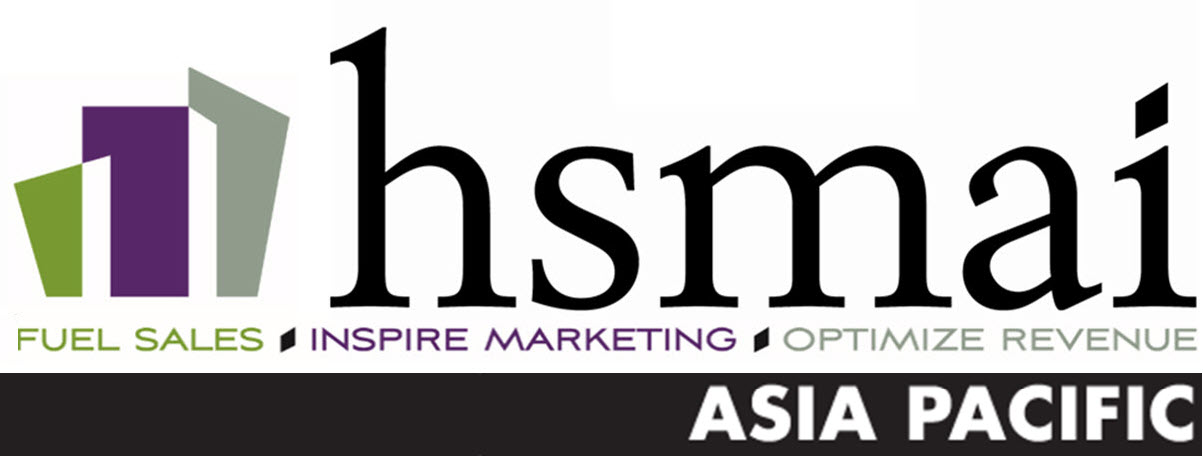
13th December, 2019, Delhi, India
The global hospitality industry has witnessed a period of unprecedented growth, thanks to the availability of new digital channels. In 2018, the global hotels market was valued at approximately $147.57 billion, expected to generate around $211.54 billion by 2026 at a CAGR of 4.6% Inevitably, this implies an upheaval of traditional distribution dynamics, urging hoteliers to embrace disruption. Consider how traditional distribution systems such as Thomas Cook and Amoma, are fast losing relevance.
To delve deeper into this space, Hospitality Sales & Marketing Association International (HSMAI) launched their India chapter in partnership with RateGain. We invited revenue leaders from leading hotels for a vibrant exchange of thoughts, discussing the current challenges and future expectations from Hospitality Distribution and Revenue Management, with an online meeting.
Looking Back at 2019 and What it Means for the New Year
We started the year with an optimistic stance, looking forward to a year of high demand and corresponding supply. But the high demand didn’t pan out. Unfortunately, 2019 was a year when industry leaders were very optimistic about forecasts. There is general agreement amongst the hotel leaders that 2019 started with optimistic forecasts until an economic slowdown in the India region, with several reports on lower GDP than expected, which impacted demand.
Is 2020 poised to be the year where we see an upswing?
The answer isn’t so black-and-white, our participants suggest. Hoteliers cannot expect growth to automatically pick up without any intervention on their side. In fact, they must be prepared to face similar challenges as this year. In 2020, there are a few events on the cards such as the formalization of Brexit, impacting travel in the European Union and the UK. There is also the US election in the last quarter – this might impact travel plans as well, noted one participant.
Zeroing-in on India, this region went through a number of waves in 2019, making it a tumultuous period for hospitality stakeholders. We saw a tough start in Q1 and Q2 for India; by the end of September, supply was outpacing demand in this region for the very first time. In Q3 of the financial year, we witnessed somewhat of a turnaround, and this trend is expected to continue in 2020. While the first half may bring a positive climate for distribution and revenue growth, the last quarters look more complex.
The US election in November of 2020 means that Q3 performance in 2020 may not be as good as this year. Give or take, we can expect the coming fiscal to be 2019 2.0 – in other words, our attendees predict that the new year will see similar crests and troughs in demand, in response to market movements.
The takeaway for hoteliers is clear: Stay agile and be open to frequent rate changes. Hoteliers also need robust distribution systems that can seamlessly implement 3-to-4 rate changes per day across multiple digital channels.
But outside of India, hoteliers seemed to fare better. The Middle East, specifically, did not find the market quite so challenging. Interestingly, one industry leader highlighted that ‘challenging’ is a relative term. In 2019, if we look at what India has done for the Middle East, it is quite positive. In 2020, the Expo is happening in Dubai, which also bodes well.
Some leaders continue to stay confident about the revenue generation opportunities for properties in India as well. We need to look at trendlines rather than headlines. Supply growth is starting to mute and will come down to 1% by next year, so that should help. There is also a 3X growth in wedding ceremonies and the sporting industry plays a role. These are some of the reasons some participants were more bullish – they recommend a relook at the datasets used for distribution and revenue generation.
Overall, with the changing distribution dynamics and volatility of travel trends globally, hoteliers in India have to remain adaptable. Change also seems to be accelerated in India due to the youth of the generation, as a large percentage of the population in India is under 35 years old. This has an impact both on consumer behaviour dynamics as well as talent management.
How Talent Management and Collaboration Could Drive higher Revenue in 2020
One of the key strategies to improve revenue management is honing the right skillsets and enabling multi-discipline collaboration.
The question of attracting the right talent is increasingly complex with Gen Z entering the workplace. At Marriott, we are building a solid talent pipeline so that this young talent can be driven upwards on the career ladder. Apart from recognising employees for their revenue skills, we are also looking to aid in learning and development, accelerating their career progression.WE WILL AKS IF THIS PERSON CAN BE QUOTED – Jackie/LiMin
Talent nurturing should be at the top of every business leader’s minds, and it is a common challenge in the industry. Fortunately, achievements in revenue management and distribution are starting to gain recognition. One of the positive trends we observed is It is good to see that revenue management has acquired a voice, a free-standing discipline status. We need more of that, leaders agreed, and that is where talent will truly shine.
Honing and nurturing talent holistically within the revenue and distribution discipline becomes increasingly important as the new talent joining the industry has a hunger for a more comprehensive career path. This is a growing trend in revenue management talent management worldwide and needs to be constantly fine-tuned as the discipline gains maturity within the hospitality industry in Asia Pacific.
However, multi-disciplinary collaboration must go hand-in-hand with talent management. Employees need the right set of data and tools to grow revenues for hotels. This means breaking down traditional silos between revenue, distribution, and marketing. At the end of the day, guests value a hotel that values them – but it is impossible to personalize experiences if data is lying in three separate silos.
With the revenue, distribution, and marketing data coming together, we can start tracing the guest’s journey right from the time they start dreaming about a trip to the moment they become loyal customers.
Industry leaders are beginning to prioritize talent development and innovation before anything else. Let’s now look at some of the top predictions and expectations for 2020.
What Are Some of the Other Tactics Hoteliers Could Explore in 2020?
The discussion revealed two disruptive moves should be on a hotelier’s radar.
- Monetization of cancelled bookings: Imagine if we were to start charging cancellation fees a nominal amount) even before a period of 48 hours. The impact in India would be immense, as there is approximately 40% cancellation in this region.
- Agile pricing basis Point of Sale (PoS): Imagine if we were to market our offerings in a different currency and time, depending on the geography of the PoS. Disruptions like these are the future of Total Revenue Management.
How Will Distribution and Revenue Management Transform in 2020?
To meet the expectations of industry leaders and a new generation of guests, we need to look at new technologies for distribution.
Next year when we connect at the same time, Google’s search engine might play a bigger role in our distribution lines. Google is working to deliver a unified experience for travelers. It will be interesting to watch how that particular feature pans out – as one industry leader put it, Google may not be the OTA to be, but it is definitely the distribution platform to be.
Broadly, there are three expectations on every industry leader’s wishlist for 2020:
- No rate parity! Stakeholders should be able to change rates five times a day, and it reflects with a snap.
- More direct business – from websites, mobile apps etc.
- Customer profiling by leveraging social media data. It is when we get a finger on the pulse of the customer that revenue managers can put their finger on the next best action.
Global expectations from Revenue Leadership is changing in 2020
HSMAI in the Americas, Europe and Asia Pacific have been discussing the requirement for Revenue Management to further evolve as a discipline. Across the globe, the heads of revenue for major brands agree on the next big change and it’s not just developing the talent that you bring into revenue management, in 2020, leaders will need to work on their own skillset. Revenue leaders will be expected to
“take the lead in revenue strategy”
for the business as a whole. “For our current revenue leaders, this means focusing on elevating leadership and business acumen, anticipating and responding to headwinds, aligning sales, marketing, and revenue optimization efforts, adapting to the ever-changing landscape of hospitality technology, and driving profit throughout the customer journey” said Jackie Douglas, President, HSMAI Asia Pacific.
“This changed expectation is driving the priority to bring the HSMAI family into India. HSMAI is a non-profit industry association whose sole mission is to increase the commercial acumen of hoteliers in sales, marketing and revenue management in hotels. The industry can benefit from getting involved and learning from each other, and from global leaders through this initiative” said CS Ramachandran, Vice President – Hotel Revenue Optimization – South Asia, Middle East, Africa & Australasia at Preferred Hotels & Resorts.
One of the major focus areas for distribution technology providers will be the integration of experiences. This takes the shape of a three-dimensional strategy, a webinar participant pointed out. They are working on the 3Ds of revenue management: direct, dynamic, and digital. That’s a useful mantra for 2020, with the expectation of better distribution technologies. It also sets the stage for the impetus to expand in 2021 with asset-lite properties.
Right now, we are poised at an inflection point in the transformation of distribution systems used by hoteliers. By intelligently converging the right talent management tactics with cutting-edge tools and disruptive ideas, industry leaders can move out of the so-called “slump” witnessed in 2019 and look forward to greener pastures.
India remains an important travel market both for outbound travellers to other parts of Asia Pacific and providing unique experiences for inbound travellers within the region. The enthusiasm for change and disruption makes this market one to watch – both in thought leadership for future changes in Revenue and Distribution practices, and adaption to fresh technology to engage a constantly evolving customer base.
To know more please visit https://hsmai-india.org



